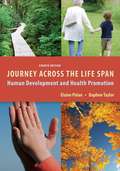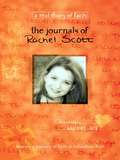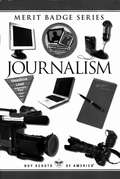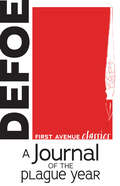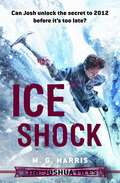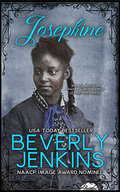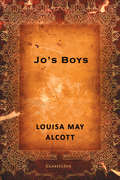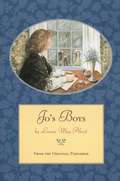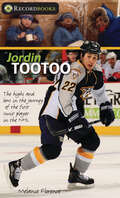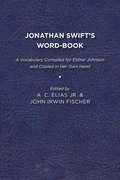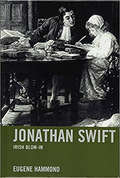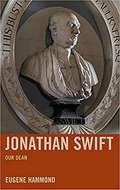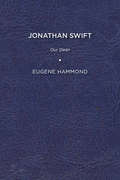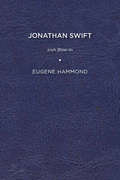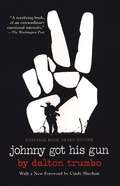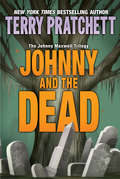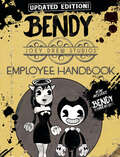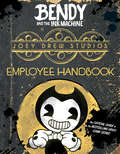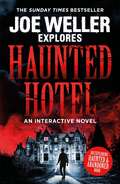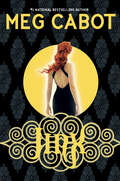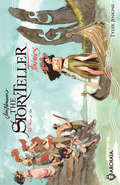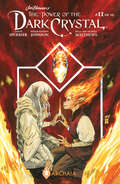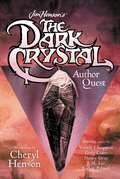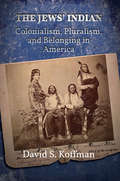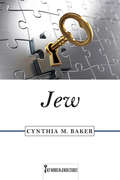- Table View
- List View
Journey Across the Life Span: Human Development and Health Promotion
by Elaine U. Polan Daphne R. TaylorAs health care delivery changes, there is a growing emphasis on health promotion, maintenance, and restoration for individuals in a variety of settings. Elaine Polan and Daphne Taylor s book addressees those needs as it guides students through the life cycle from conception to old age. Through user-friendly chapters and new, four-color presentation, they provide LPN/LVN students with a complete review of growth and development across the lifespan.
The Journals of Rachel Scott
by Beth NimmoWritten teen to teen as a first-person narrative, this is not a book about the Columbine shootings - instead, it's a story of faith, told in Rachel's own words. The book includes first person narratives, journal entries, drawings from Rachel's diary, and notes from her parents and friends at Columbine High School. Additionally, "me pages" (what makes me angry, what I'm afraid of) encourage teens to explore issues central to their lives and faith. Highlighting Rachel's faith journey from the time she became a Christian, through her joys and doubts, her hopes and dreams, this story is a triumphant testimony that teens will treasure.
Journalism (Merit Badge Series)
by Boy Scouts of America StaffEnhancing our youths' competitive edge through merit badges
A Journal of the Plague Year (First Avenue Classics ™)
by Daniel DefoeFirst published in 1722, this unabridged edition of Daniel Defoe's A Journal of the Plague Year covers events in London, England, in 1665 as the bubonic plague spread throughout the city. Though a work of historical fiction, the book includes accurate historical details, charts, statistics, and government documents. Defoe's narrator follows the spread of the plague and relates how powerful families and government officials tried to hide the disease to avoid inconvenience and public panic. But as deaths mounted and fear spread, those who could began to flee the city. A Journal of the Plague Year continues to resonate with modern audiences through its parallels to issues caused by modern diseases and the COVID-19 pandemic.
The Joshua Files: Ice Shock
by M. G. HarrisThough he knows about the secret Mayan prophesy that his father and grandfather were a part of, Josh still hasn't solved the mystery surrounding his father's death. But when Josh learns that a special artifact, the Bracelet of Itzamna, is the key to both that and the mystery of the codex, he must return to the hidden city of Ek Naab. Only this time he must do it alone-because as the stakes rise, Josh can no longer trust even his closest allies. This second installment of the action-packed Joshua Files series brings readers back to the secret world of the Mayan civilization, where the mysterious 2012 prophecy still threatens the world. Does Josh have what it takes to make it out alive once again?
Josephine (Avon True Romance Series)
by Beverly JenkinsJosephine ‘Jojo’ Best has it all figured out. Just seventeen, she's been to college, she has her own hairdressing shop and nothing will distract her from her goals. That is, until handsome George Brooks begins to pursue her. Then the return of her childhood nemesis complicates her life even further! <P><P>No girl is immune to Adam Morgan’s charm. But when a wound brings him home from the War Between the States, it’s a girl he used to call “Pest” who’s turning the tables. All grown up, Jojo is being courted by another soldier, and Adam knows it would be foolish to play with her heart; but he just can’t get the ugly duckling turned swan off his mind. <P><P>Jojo, too, can't deny her growing feelings for Adam. But he's always been such a flirt—how can she take him seriously? He can't possibly be serious about her. Besides, she has George falling all over himself to please her. As the war rages on, Adam's feelings for Jojo grow stronger, but Jojo's determination to resist him does, too. One thing is clear, though: Jojo is a girl who always gets what she wants, even when she doesn’t know what it is!
Jo's Boys: And How They Turned Out
by Louisa AlcottThe little men of Plumfield are now grown and making their ways in the world. But even as their pursuits take them far from home, "Mother" Jo March continues to play an inspiring and steadying role in their lives.Through adventures great and small, Tommy, Emil, Demi, Nat, Dan, and the rest of the March children experience love and loss, but never forget the lessons they learned from Meg, Jo, and Amy March—the little women who have guided them from childhood.Be it mystery, romance, drama, comedy, politics, or history, great literature stands the test of time. ClassicJoe proudly brings literary classics to today's digital readers, connecting those who love to read with authors whose work continues to get people talking. Look for other fiction and non-fiction classics from ClassicJoe.
Jo's Boys: How They Turned Out
by Louisa May AlcottThis sequel to Alcott's "Little Women" and "Little Men" chronicles the return of the classmates of Plumfield, Jo's school for boys. Readers re-encounter Nat, the orphaned street musician, now a conservatory student; restless Dan, back from the gold mines of California; business-minded Tom; and other old friends.
Jordin Tootoo: The Highs and Lows in the Journey of the First Inuk to Play in the NHL (Lorimer Recordbooks)
by Melanie FlorenceJordin Tootoo is known for having to "fight his way through." Jordin had more than his fair share of fights both on and off the ice. He had to overcome the social problems that are associated with the far north, fight his way through the discrimination and culture shock he encountered after leaving his remote community to play in the Juniors, and see his way through the grief of losing his NHL-bound older brother and hero, Terence Tootoo, to suicide in 2002. From a small rink in the Arctic Circle, to joining the Nashville Predators in 2001 and becoming an NHL hero, this is the story of the highs and lows of the first Inuk to play in the NHL. Distributed in the U.S by Lerner Publishing Group
Jonathan Swift's Word-Book: A Vocabulary Compiled for Esther Johnson and Copied in Her Own Hand
by A. C. Elias Jr. John Irwin FischerThis Word-Book is presumably the only work of Jonathan Swift’s not in print, until now. Since the 1690s, Swift had been formulating a list of words and definitions for his protégé Esther Johnson, beginning with terms from the Book of Common Prayer. His was apparently an ongoing list, kept rather haphazardly, with open spaces for adding new words. About 1710, when Swift was in London, Johnson, in Dublin, set out to formalize the dictionary, copying out Swift’s words and definitions to make an orderly and careful book with no blank spaces. Probably in 1713, when Swift returned to Ireland, Johnson presented her Word-Book to him, but his school-masterly corrections of her work may have offended her. After Johnson’s death in 1728, Swift gave the Word-Book to their mutual friend, Elizabeth Sican. It was passed down over generations, until in 1976, the young American Swiftian A. C. Elias, Jr., bought it, intending to edit it in his old age. Before his early death in 2008, Elias asked John Fischer to assume the challenge of bringing the book into print. Fischer took on the task until 2015, when he too passed away, after which his wife Panthea Reid completed the task. This volume includes illustrations from the original book, a transcript of it with schematic indications of Swift’s corrections, as well as essays and appendices by Fischer and Elias tracing provenance, exploring the social and psychological milieu in which the book was written, and tracking Swift’s work as a lexicographer. Published by University of Delaware Press. Distributed worldwide by Rutgers University Press.
Jonathan Swift: Irish Blow-In
by Eugene HammondJonathan Swift: Irish Blow-in covers the arc of the first half of Jonathan Swift’s life, offering fresh details of the contentment and exuberance of his childhood, of the support he received from his grandmother, of his striking affection for Esther Johnson from the time she was ten years old (his pet name for her in her twenties was “saucebox”), of his precocious entry into English politics with his Contests and Dissensions pamphlet, of his brilliant and much misunderstood Tale of a Tub, and of his naive determination to do well both as a vicar of the small parish of Laracor in Ireland and as a writer for the Tory administration trying to pull England out of debt by ending the war England was engaged in with France. I do not share with past biographers the sense that Swift had a deprived childhood. I do not share the suspicion that most of Swift’s enmities were politically motivated. I do not feel critical of him because he was often fastidious with his money. I do not think he was insincere about his religious faith. His pride, his sexual interests, his often shocking or uninhibited language, his instinct for revenge – emphasized by many previous biographers – were all fundamental elements of his being, but elements that he either used for rhetorical effect, or that he tried to keep in check, and that he felt that religion helped him to keep in check. Swift had as firm a conviction as did Freud that we are born with wayward tendencies; unlike Freud, though, he saw both religion and civil society as necessary and helpful checks on those wayward tendencies, and he (frequently, but certainly not always) acknowledged that he shared those tendencies with the rest of us. This biography, in two books, Jonathan Swift: Irish Blow-in and Jonathan Swift:Our Dean, will differ from most literary biographies in that it does not aim to show how Swift’s life illuminates his writings, but rather how and why Swift wrote in order to live the life he wanted to live. I have liberally quoted Swift’s own words in this biography because his inventive expression of ideas, both in his public works and in his private letters, was what has made him a unique and compelling figure in the history of literature. I hope in these two books to come closer than past biographies to capturing how it felt to Swift himself to live his life. Published by University of Delaware Press. Distributed worldwide by Rutgers University Press.
Jonathan Swift: Our Dean
by Eugene HammondJonathan Swift: Our Dean details the political climax of his remarkable career—his writing and publication of The Drapier’s Letters (1724), Gulliver’s Travels (1726), and A Modest Proposal (1729)—stressing the relentless political opposition he faced and the numerous ways, including through his sermons, that he worked from his political base as Dean of St. Patrick’s Cathedral, psychologically as well as physically just outside the Dublin city walls, to attempt to rouse the Irish people to awareness of the ways that England was abusing them. This book faces squarely the likelihood that Swift had a physical affair with Esther Vanhomrigh between 1719 and 1723, and reassesses in the light of that likelihood his conflicting relations with Esther Vanhomrigh and Esther Johnson. It traces the many loving friendships with both men and women in Ireland that sustained Swift during the years when his health gradually failed him, enabling him to continue indefatiguably, both through his writings and his authority as Dean of St. Patrick’s, to contribute to the public welfare in the face of relentless British attempts to squeeze greater and greater profits out of their Irish colony. Finally, it traces how Swift’s political indignation led to his treating many people, friends and enemies, cruelly during the 1730s, even while his humor and his ability to make and attract new friends sustained themselves until his memory finally failed him in 1742. This biography, in two books, Jonathan Swift: Irish Blow-in and Jonathan Swift:Our Dean, comes closer than past biographies to capturing how it felt to Swift himself to live his life. Published by University of Delaware Press. Distributed worldwide by Rutgers University Press.
Jonathan Swift: Our Dean
by Eugene HammondJonathan Swift: Our Dean details the political climax of his remarkable career—his writing and publication of The Drapier’s Letters (1724), Gulliver’s Travels (1726), and A Modest Proposal (1729)—stressing the relentless political opposition he faced and the numerous ways, including through his sermons, that he worked from his political base as Dean of St. Patrick’s Cathedral, psychologically as well as physically just outside the Dublin city walls, to attempt to rouse the Irish people to awareness of the ways that England was abusing them. This book faces squarely the likelihood that Swift had a physical affair with Esther Vanhomrigh between 1719 and 1723, and reassesses in the light of that likelihood his conflicting relations with Esther Vanhomrigh and Esther Johnson. It traces the many loving friendships with both men and women in Ireland that sustained Swift during the years when his health gradually failed him, enabling him to continue indefatiguably, both through his writings and his authority as Dean of St. Patrick’s, to contribute to the public welfare in the face of relentless British attempts to squeeze greater and greater profits out of their Irish colony. Finally, it traces how Swift’s political indignation led to his treating many people, friends and enemies, cruelly during the 1730s, even while his humor and his ability to make and attract new friends sustained themselves until his memory finally failed him in 1742. This biography, in two books, Jonathan Swift: Irish Blow-in and Jonathan Swift:Our Dean, comes closer than past biographies to capturing how it felt to Swift himself to live his life. Published by University of Delaware Press. Distributed worldwide by Rutgers University Press.
Jonathan Swift: Irish Blow-In
by Eugene HammondJonathan Swift: Irish Blow-in covers the arc of the first half of Jonathan Swift’s life, offering fresh details of the contentment and exuberance of his childhood, of the support he received from his grandmother, of his striking affection for Esther Johnson from the time she was ten years old (his pet name for her in her twenties was “saucebox”), of his precocious entry into English politics with his Contests and Dissensions pamphlet, of his brilliant and much misunderstood Tale of a Tub, and of his naive determination to do well both as a vicar of the small parish of Laracor in Ireland and as a writer for the Tory administration trying to pull England out of debt by ending the war England was engaged in with France. I do not share with past biographers the sense that Swift had a deprived childhood. I do not share the suspicion that most of Swift’s enmities were politically motivated. I do not feel critical of him because he was often fastidious with his money. I do not think he was insincere about his religious faith. His pride, his sexual interests, his often shocking or uninhibited language, his instinct for revenge – emphasized by many previous biographers – were all fundamental elements of his being, but elements that he either used for rhetorical effect, or that he tried to keep in check, and that he felt that religion helped him to keep in check. Swift had as firm a conviction as did Freud that we are born with wayward tendencies; unlike Freud, though, he saw both religion and civil society as necessary and helpful checks on those wayward tendencies, and he (frequently, but certainly not always) acknowledged that he shared those tendencies with the rest of us. This biography, in two books, Jonathan Swift: Irish Blow-in and Jonathan Swift: Our Dean, will differ from most literary biographies in that it does not aim to show how Swift’s life illuminates his writings, but rather how and why Swift wrote in order to live the life he wanted to live. I have liberally quoted Swift’s own words in this biography because his inventive expression of ideas, both in his public works and in his private letters, was what has made him a unique and compelling figure in the history of literature. I hope in these two books to come closer than past biographies to capturing how it felt to Swift himself to live his life. Published by University of Delaware Press. Distributed worldwide by Rutgers University Press.
Johnny Got His Gun: Johnny Cogió Su Fusil (Film Ink Ser.)
by Dalton TrumboThis is no ordinary novel. This is a novel that never takes the easy way out: it is shocking, violent, terrifying, horrible, uncompromising, brutal, remorseless and gruesome...but so is war. Written from the perspective of one man's thoughts, often a stream of consciousness with its own punctuation style, even the title takes on new meaning. Published in 1939, the book itself has a history, partially described by the author in introductions in 1959 and 1970. A compelling novel about war that is still relevant today, this story is not to be missed. Note: The author does not follow standard American spelling.
Johnny and the Dead (Johnny Maxwell Trilogy #2)
by Terry PratchettSir Terry Pratchett, beloved and bestselling author of the Discworld fantasy series, explores the bonds between the living and the dead and proves that it's never too late to have the time of your life—even if it is your afterlife!Johnny Maxwell's new friends do not appreciate the term "ghosts," but they are, well, dead.The town council wants to sell the cemetery, and its inhabitants aren't about to take that lying down! Johnny is the only one who can see them, and and the previously alive need his help to save their home and their history. Johnny didn't mean to become the voice for the lifeless, but if he doesn't speak up, who will?Read more of Johnny Maxwell's adventures in Only You Can Save Mankind and Johnny and the Bomb!
Joey Drew Studios Updated Employee Handbook: An AFK Book (Bendy)
by ScholasticUnlock the mysteries of the hit horror video game Bendy and the Ink Machine and Bendy and the Dark Revival in this terrifying guidebook!Welcome to Joey Drew Studios! As a new animator, it's your job to carry on Mr. Drew's legacy of iconic characters like Bendy, Boris the Wolf, and Alice Angel! In this handy guidebook, you'll learn how to get around the studio, operate our state-of-the-art Ink Machine, and work well with our dedicated staff of creatives and crew members. Mr. Drew himself has even included a walk-through of all the tasks you'll need to complete to make it out of your first week alive, as well as an excerpt from his memoir The Illusion of Living, to inspire you to carry our company mission forward.In time, we hope you'll find a home here at our studios. Who knows? After a while, you may never want to leave!Don't miss this complete guide that will take you inside the world of Joey Drew Studios. It's your key to unlocking the mysteries of Bendy! Includes updated content from Bendy and the Dark Revival!
Joey Drew Studios Employee Handbook: An AFK Book (Bendy)
by Cala SpinnerUnlock the mysteries of the hit horror video game Bendy and the Ink Machine in this terrifying, in-world guidebook!Dreams do come true at Joey Drew Studios!Welcome to Joey Drew Studios! As a new animator, it's your job to carry on Mr. Drew's legacy of iconic characters like Bendy, Boris the Wolf, and Alice Angel! In this handy guidebook, you'll learn how to get around the studio, operate our state-of-the-art Ink Machine, and work well with our dedicated staff of creatives and crew members. Mr. Drew himself has even included a walk-through of all the tasks you'll need to complete to make it out of your first week alive, as well as an excerpt from his memoir The Illusion of Living, to inspire you to carry our company mission forward.In time, we hope you'll find a home here at our studios. Who knows? After a while, you may never want to leave!Don't miss this terrifying in-world guidebook, your key to unlocking the mysteries of Bendy and the Ink Machine!
Joe Weller Explores: Haunted Hotel
by Joe WellerFor fans of The Sidemen, a hilariously spooky choose-your-own-adventure book from YouTube sensation Joe Weller.Join Joe as he explores a haunted hotel, where petrifying paranormal surprises can lurk in every dark corner. You can stick with Joe or you can choose your own path and make your way through the building as you encounter long eerie corridors, experience horrific chills and not to forget, you may witness Joe behaving like an absolute nut-job.Enter at your own peril. And be sure to bring a torch with you as it's going to be one unforgettable adventure.
Jinx
by Meg CabotIt's not easy being Jinx. Jean Honeychurch hates her boring name (not Jean Marie, or Jeanette, just . . . Jean). What's worse? Her all-too-appropriate nickname, Jinx. Misfortune seems to follow her everywhere she goes—even to New York City, where Jinx has moved to get away from the huge mess she caused in her small hometown. Her aunt and uncle welcome her to their Manhattan town house, but her beautiful cousin Tory isn't so thrilled. . . . In fact, Tory is hiding a dangerous secret—one that could put them all in danger. Soon Jinx realizes it isn't just bad luck she's been running from . . . and that the curse she has lived under since the day she was born may be the only thing that can save her life.
Jim Henson's Storyteller: Fairies #3 (Jim Henson's Storyteller: Fairies #3)
by Tyler JenkinsTyler Jenkins (Grass Kings) brings life to the Menehune, the fairies of Hawaiian folklore.
Jim Henson's The Power of the Dark Crystal #11 (Jim Henson's The Power of the Dark Crystal #11)
by Simon Spurrier Phillip Kennedy Johnson Kelly Matthews Nichole MatthewsTensions rise as Kensho and Thurma make their way to the inner sun of the Fireling realm.
Jim Henson's The Dark Crystal Author Quest
by Greg Coles Esther Palmer Nancy Gray Vinnie Chiappini J. M. LeeMore than 30 years after Jim Henson's The Dark Crystal first appeared on screens, the Jim Henson Company hosted an author quest to find the new author of The Dark Crystal prequel fiction. The competition spanned three months and nearly 500 entries, the top five of which are presented in this e-book only special. Through the eyes of Gelfling and telling tales of Skesis, these 5 stories are a taste of what is to come in the world of Thra.
The Jews’ Indian: Colonialism, Pluralism, and Belonging in America
by David S. KoffmanThe Jews’ Indian investigates the history of American Jewish relationships with Native Americans, both in the realm of cultural imagination and in face-to-face encounters. These two groups’ exchanges were numerous and diverse, proving at times harmonious when Jews’ and Natives people’s economic and social interests aligned, but discordant and fraught at other times. American Jews could be as exploitative of Native cultural, social, and political issues as other American settlers, and historian David Koffman argues that these interactions both unsettle and historicize the often triumphant consensus history of American Jewish life. Focusing on the ways Jewish class mobility and civic belonging were wrapped up in the dynamics of power and myth making that so severely impacted Native Americans, this books is provocative and timely, the first history to critically analyze Jewish participation in, and Jews’ grappling with the legacies of Native American history and the colonial project upon which America rests
Jew
by Cynthia M. BakerJew. The word possesses an uncanny power to provoke and unsettle. For millennia, Jew has signified the consummate Other, a persistent fly in the ointment of Western civilization’s grand narratives and cultural projects. Only very recently, however, has Jew been reclaimed as a term of self-identification and pride. With these insights as a point of departure, this book offers a wide-ranging exploration of the key word Jew—a term that lies not only at the heart of Jewish experience, but indeed at the core of Western civilization. Examining scholarly debates about the origins and early meanings of Jew, Cynthia M. Baker interrogates categories like “ethnicity,” “race,” and “religion” that inevitably feature in attempts to define the word. Tracing the term’s evolution, she also illuminates its many contradictions, revealing how Jew has served as a marker of materialism and intellectualism, socialism and capitalism, worldly cosmopolitanism and clannish parochialism, chosen status, and accursed stigma. Baker proceeds to explore the complex challenges that attend the modern appropriation of Jew as a term of self-identification, with forays into Yiddish language and culture, as well as meditations on Jew-as-identity by contemporary public intellectuals. Finally, by tracing the phrase new Jews through a range of contexts—including the early Zionist movement, current debates about Muslim immigration to Europe, and recent sociological studies in the United States—the book provides a glimpse of what the word Jew is coming to mean in an era of Internet cultures, genetic sequencing, precarious nationalisms, and proliferating identities.
